Forum Replies Created
-
AuthorPosts
-
Robert Dunlop
ParticipantNot WW2 but we got to reproduce the First Battle of the Marne on the 100th Anniversary in the same region in France. This was the pivotal battle in September 1914 that broke the German advance into France.
The details of the project can be found here: link
This is the overhead photo of the final setup in the Dormans’ chapel, with the tables representing more than 50km of battlefield:

The terrain was accurately reproduced, based on original maps and supported by the use of Hexon terrain pieces for 20 metre contour levels.

There were more than 10,000 6mm figures deployed. This is a photo of Irregular Miniatures French (from left) and German cavalry about to face off near the town of Courgivaux:
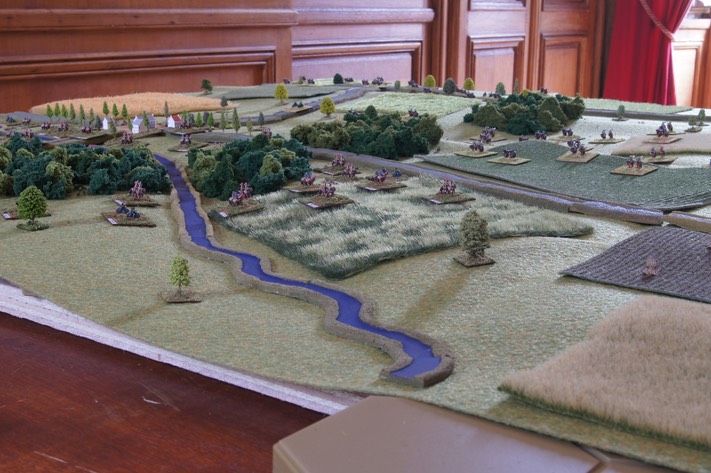
The public response was amazing. Hundreds of people visited to view the spectacle, including the grandson of a British cavalry officer who took part in the battle. He was in his 80s and was thrilled to be shown where his grandfather had been.
Robert
Robert Dunlop
ParticipantTotal Battle Miniatures has just released a range of flexible river sections of various widths.
https://www.totalbattleminiatures.com/rivers
Robert
Robert Dunlop
ParticipantI use the TimeCast latex rivers, FWIIW.
Robert
Robert Dunlop
ParticipantThere is a model of the boat without the naval gun and a separate model of the naval gun, so that the gun can rotated however you like.
Robert
Robert Dunlop
ParticipantThe model will scale all the way up to 1:300, which is the largest version that I can print.
Robert
Robert Dunlop
ParticipantThe model with awnings has been created and uploaded to Thingiverse:
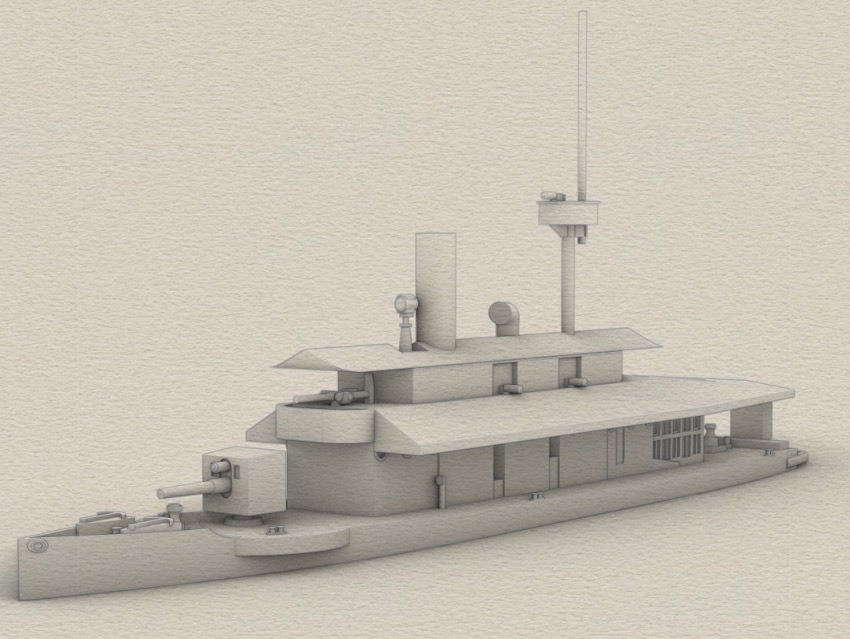
Robert
Robert Dunlop
ParticipantYes, Andrew. At this level of magnification, you see the features that are made more (or less) prominent compared to ‘real life’. It really helps with painting and, subsequently, with visualising the 6mm figures on table. Once the ten infantry companies are completed then I photograph the whole battalion, which will give a different impression.
Robert
Robert Dunlop
ParticipantThank you, Skip.
A British infantry command stand:

Robert
Robert Dunlop
ParticipantFrench Hussar:

Robert
Robert Dunlop
ParticipantA French Heavy Dragoon:

Robert
Robert Dunlop
ParticipantThank you, Gary!
A French Cuirassier:
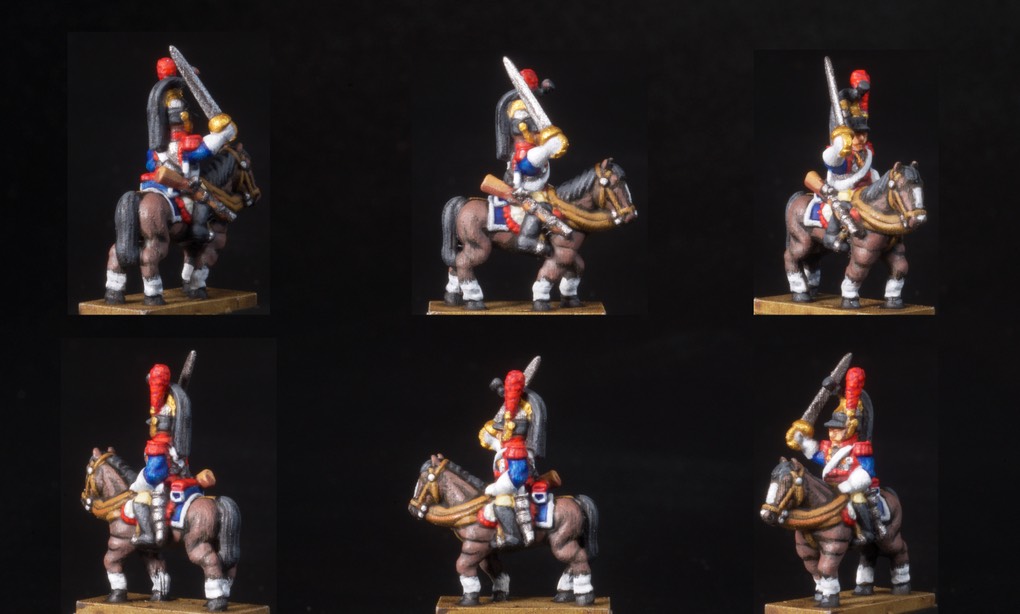
Robert
Robert Dunlop
ParticipantA British Heavy Dragoon trumpeter:

Robert
Robert Dunlop
ParticipantThank you, Gary
This time it is Blücher, also in 6mm:

Robert
Robert Dunlop
ParticipantHere is the Prince of Orange in 6mm:

Robert
Robert Dunlop
ParticipantThis is a Prussian Kürassier:

Robert
Robert Dunlop
ParticipantThank you.
Here is the Duke of Wellington in 6mm:

Robert
Robert Dunlop
ParticipantThe new multi-colour 3D printers are extraordinary. But they have a prohibitive price-tag from a gamer perspective. The costs will come down. When the figures and/or printers become truly affordable then it will herald another quantum step forward in 3d printing for sure. ‘Painting’ 3D digital sculpts is a different skill. Block colours are easy but showcase quality ‘painting’ takes more effort and finesse. It is already possible to print high quality colour figures but eventually it will be a case of printing an entire army, pre-based, with unit labels and flags. Roll on the day…
Robert
Robert Dunlop
ParticipantThank you. I have not hollowed the model, no. It would be easy to do so though. There hasn’t been any problem with warping, though it would be easy to fix with warm water if needed.
Robert
Robert Dunlop
ParticipantTank crews also dismounted Hotchkiss machine guns to provide infantry support when the tank itself was knocked out.
Robert
Robert Dunlop
ParticipantHere is the British 8″ howitzer printed for use with 6mm figures:
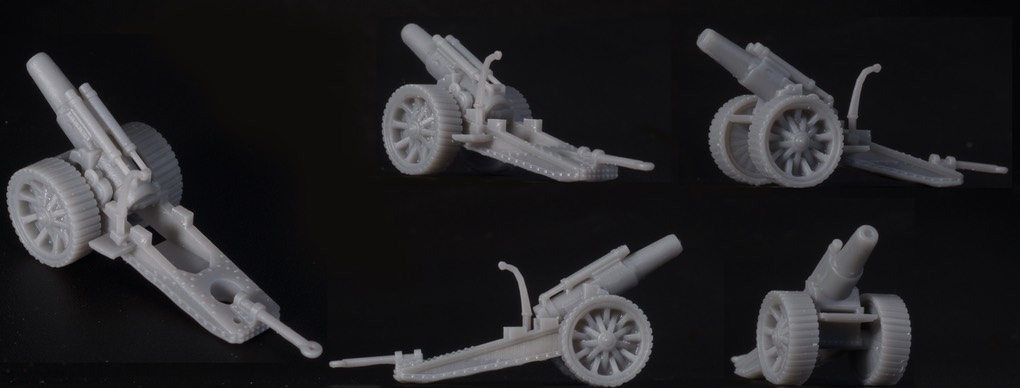
Robert
Robert Dunlop
ParticipantThank you, Steve.
Here is the British 8″ howitzer on the CAD “drawing board”:
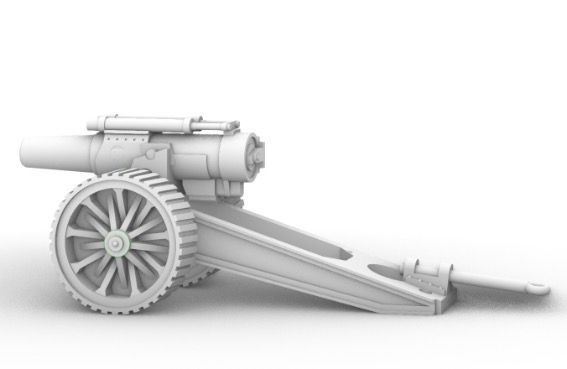
Robert
Robert Dunlop
Participant17th King’s Liverpool Battalion waits for the barrage to lift:
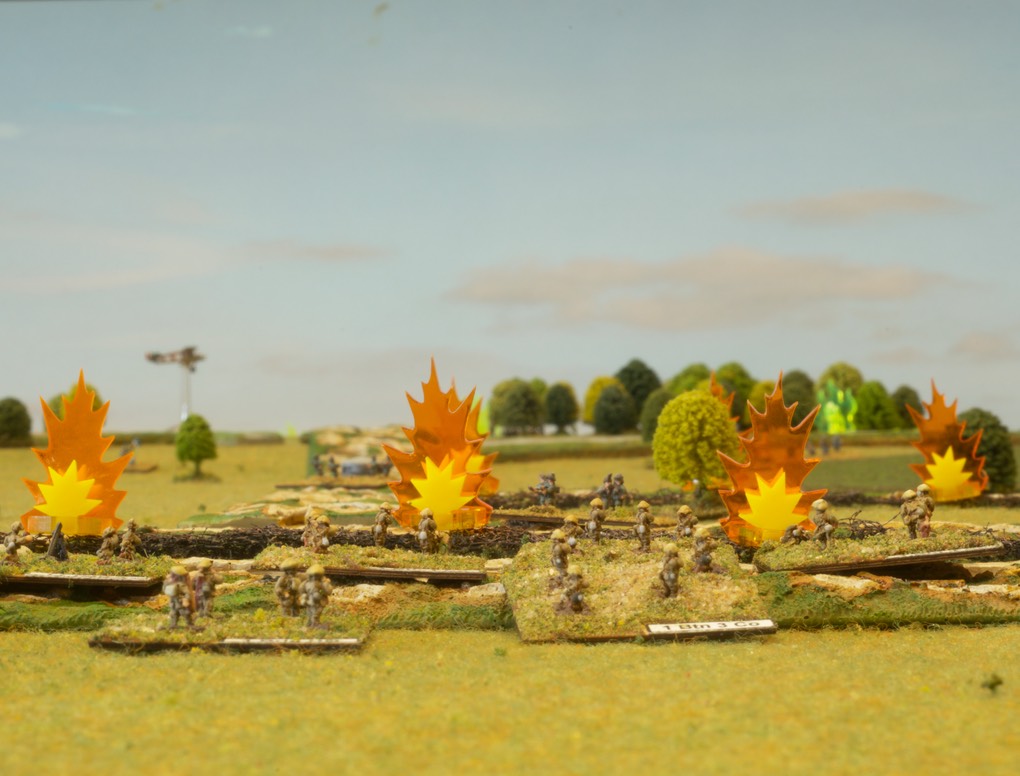
Robert
Robert Dunlop
ParticipantAnother photo taken with the new telephoto lens. This time it is the brick factory (a Leven Miniatures product) near Montauban, with a German regimental HQ in residence (6mm Baccus figures). A Litko marker denotes the use of non-persistent gas shelling on Bernafay Wood:
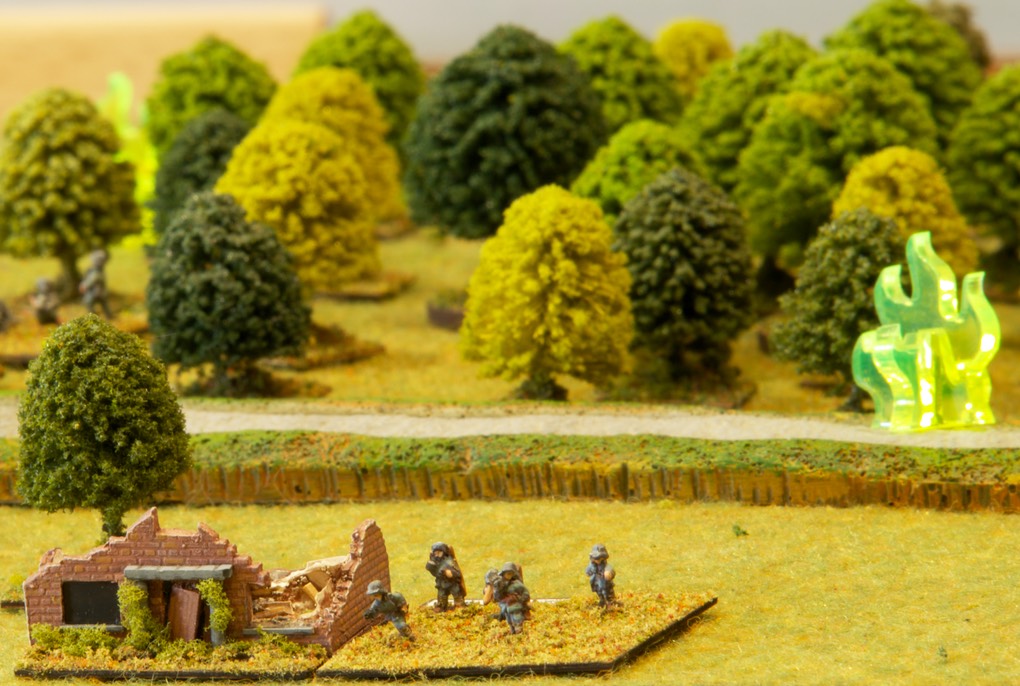
Robert
Robert Dunlop
ParticipantHere is Montauban under fire from the French heavy 22cm mortars, part of Group de Menthon attached to British XIII Corps:

The photo was taken with my new telephoto lens.
Robert
Robert Dunlop
ParticipantHere is the preparatory bombardment in the Montauban sector:

The explosion and gas markers are from Litko. The British did shell the German artillery with SK gas shells on 1st July 1916. The markers indicate Caterpillar Valley and Bernafay Wood.
Robert
Robert Dunlop
ParticipantThanks.
WW1 Western Front battles are frequently associated with the perceptions you highlighted. Certainly the 1915 period is full of futile attacks with no gain, due in no small part to the lack of artillery ammunition supplies.
Later set-piece battles pose a range of tactical challenges that, once understood, offer up meaningful and interesting Wargames, which are not so one-sided. The operational effects of wide frontage attacks are poorly documented in the literature. A little-known effect of the build-up to July 1st 1916 was von Falkenhayn’s refusal to provide reserves to the threatened Somme sectors. The German Second Army was only able to transfer forces within its command. German infantry reserves and artillery were sent north to provide extra protection for Serre and Gommecourt sectors. This set the operational conditions for tactical success of southern British and French attacks, including the attack on Montauban.
The photo below shows the table set up for the Joy of Six show, commemorating the 100th Anniversary of the Battle of the Somme in 2016. The whole battlefield is 16 feet long:
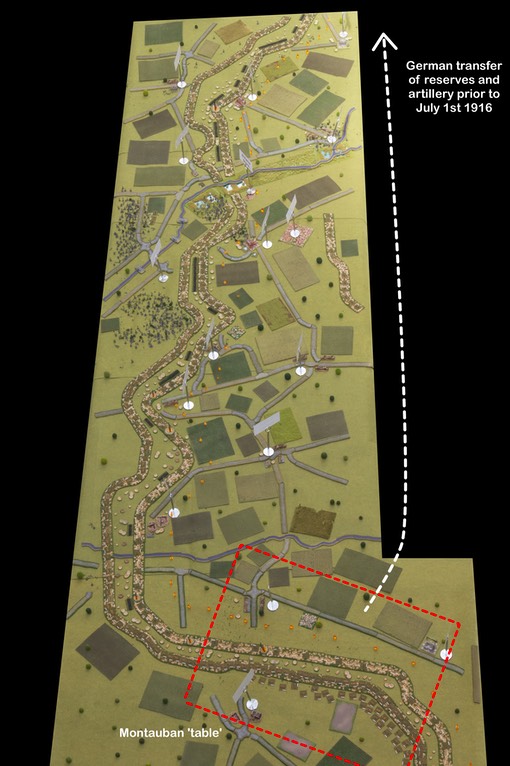
Robert
Robert Dunlop
ParticipantHere is a British division- and a corps HQ near the ruins of Carnoy:

Robert
Robert Dunlop
ParticipantHere is the battlefield, covering the equivalent of an area 4 km x 6 km.
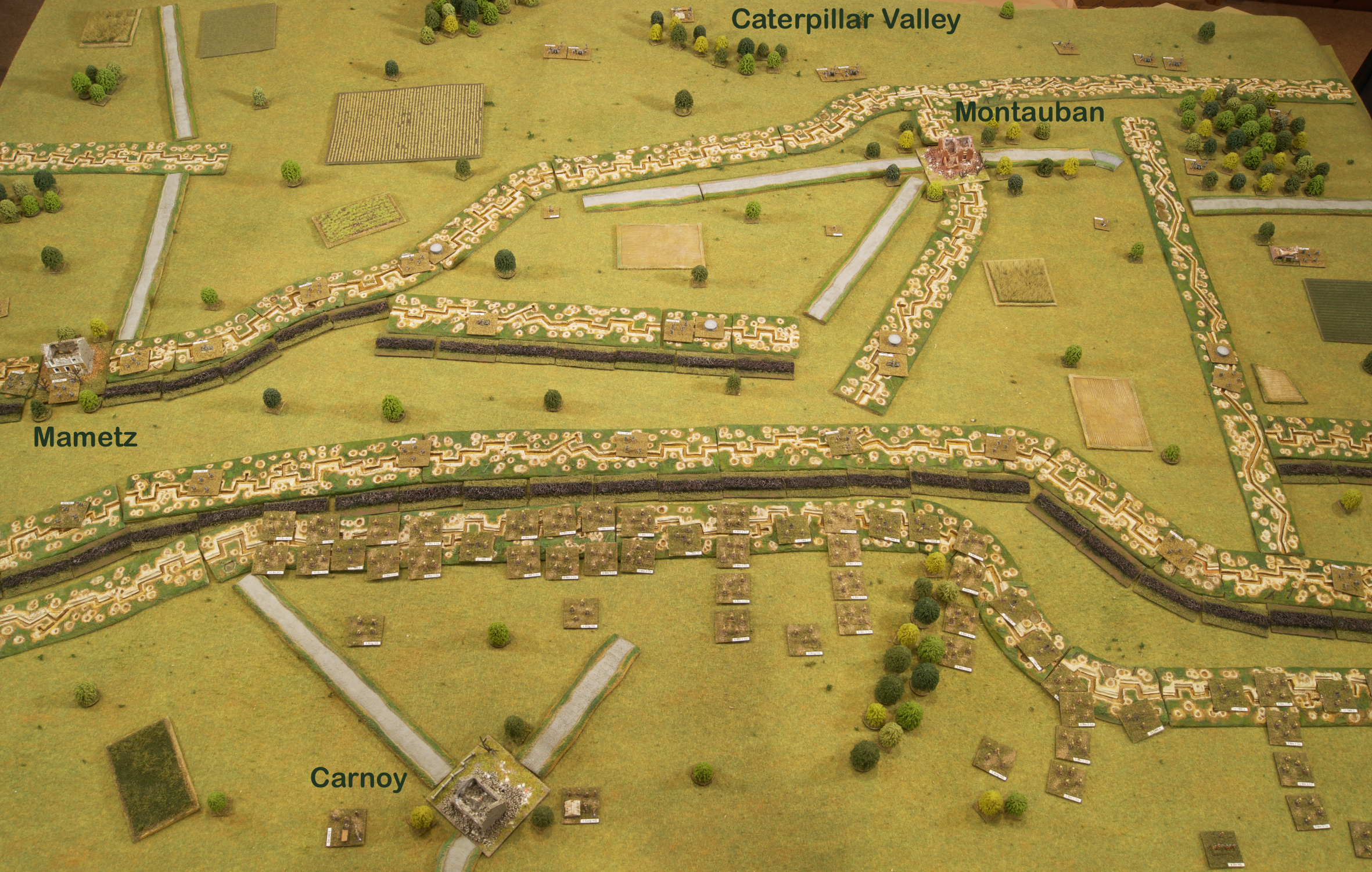
The British front line is nearest the bottom of the photo. The advance covered the battlefield and reached the furthest German trench line just beyond Montauban with about 5,000 casualties total (out of the two infantry divisions that attacked).
Robert
Robert Dunlop
ParticipantThank you very much. The other big benefit is that I can reproduce any historical battle without building specific terrain boards.
Here is British 89th Brigade forming up at the foot of Montauban ridge, operating on the right wing of the British attack on July 1st 1916:

Robert
Robert Dunlop
ParticipantOther view at table level, showing Caterpillar Valley below the Montauban ridge. The RE8 is still circling:

Robert
Robert Dunlop
ParticipantThere are three more pages added, providing additional historical context. First is the IR 140 account of the British tanks:
The war diary entry for 3rd (Light) Tank Battalion:
And a German official historical account:
Robert
Robert Dunlop
ParticipantI uploaded some more content, covering the German and 3rd Tank Battalion histories. Steve, you might have hit the server when the upload was in process.
Robert
Robert Dunlop
ParticipantThank you very much, Konstantinos.
Robert
Robert Dunlop
ParticipantThe rolling terrain is based on Kallistra Hexons, matched to the 20m contours on the WW1 topographical trench maps. A heavy felt terrain mat then gradually conforms to the contours, taking away the hexagonal edges and creating a smooth continuous but historical accurate terrain. This really helps in understanding historical battles.
Robert
Robert Dunlop
ParticipantThank you. The trenches lay in the low ground. Given the fluid nature of the fighting withdrawal, it seemed to be more important to occupy higher ground. It gave better observation and fire control over any advance by the attackers, plus cover and concealment once over the crest if a further withdrawal was needed.
Robert
Robert Dunlop
ParticipantMore figures in 15mm:

82mm recoiless rifle:
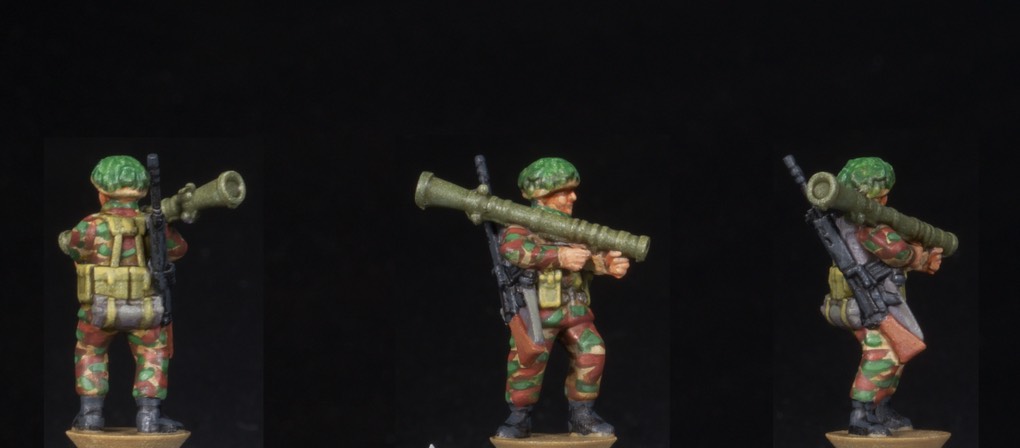
Blowpipe operator:

Robert
Robert Dunlop
ParticipantSome BAOR figures in 15mm. Firstly, GPMG team:
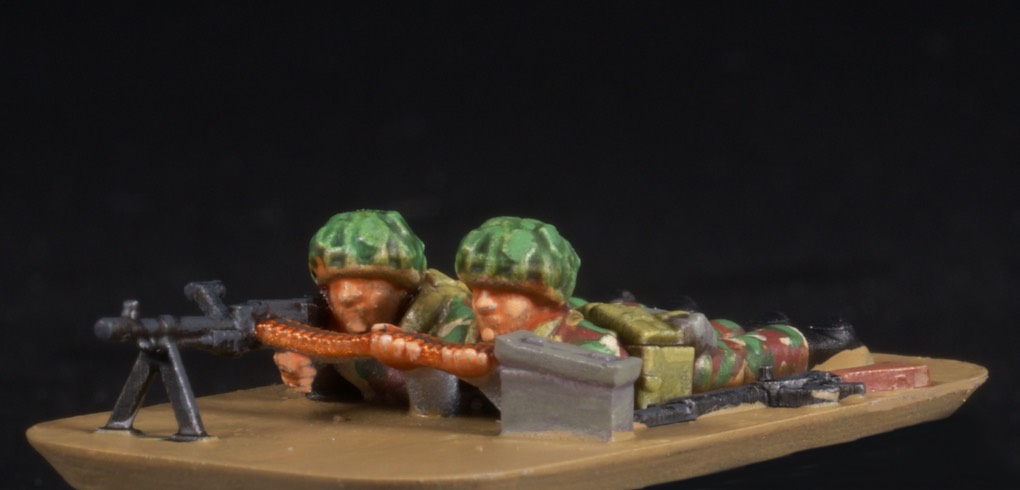
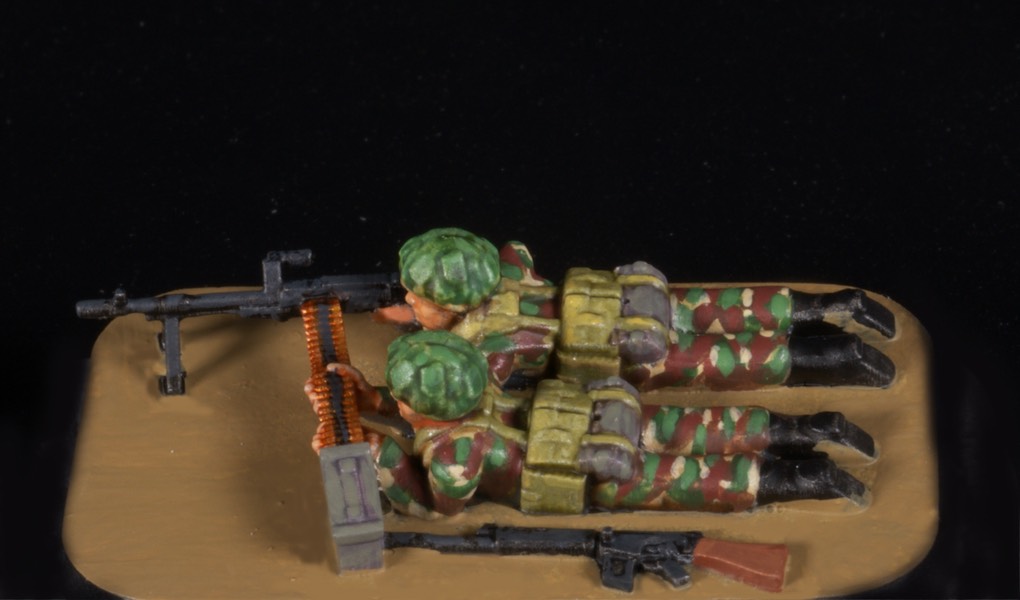
Milan operator:

Robert
Robert Dunlop
ParticipantHere is a 15mm US rifleman, viewed from various angles:
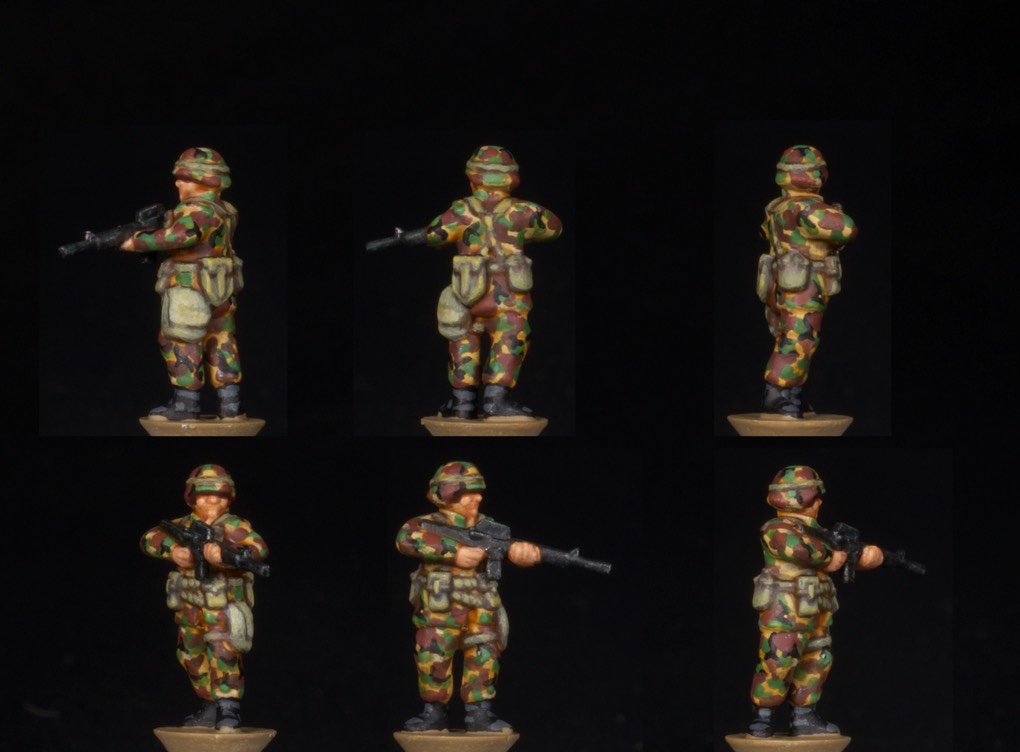
Robert
Robert Dunlop
ParticipantФил Лохмин, Henry has confirmed that he is not planning to create the jump helmets but he will be releasing the Blender files at some time later this year. It is not unethical for you to modify the content of the Blender files when these are available; only unethical to sell the results without permission from Henry. The Blender files are designed to enable changes to made for personal use.
The berets and ammo vests are designed to represent VDV in action as ground troops well after a landing.
Robert
Robert Dunlop
ParticipantФил Лохмин
Here are some 15mm VDV figures that I painted up but, as you say, they have the berets. I will check with Henry about the jump helmets. The change is not difficult, if you have access to the Blender files but I don’t know if these were released:


Robert
-
AuthorPosts


